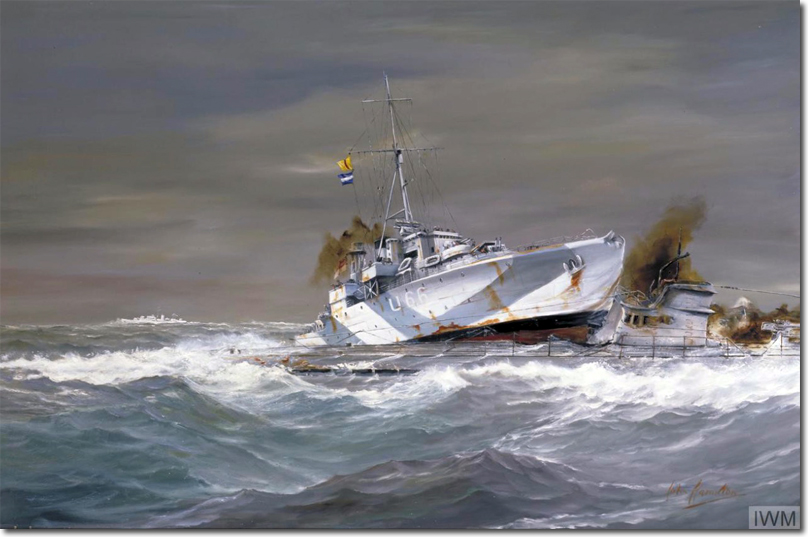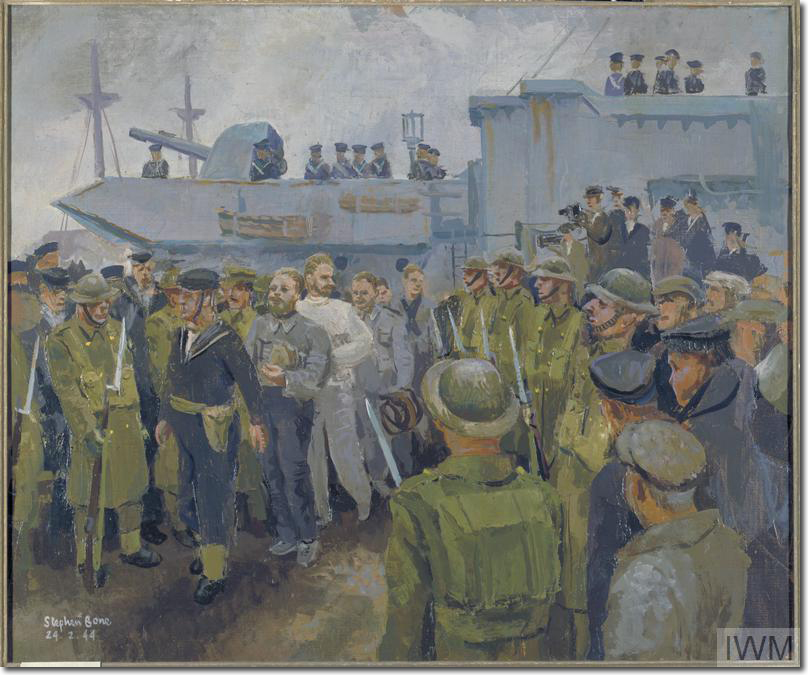|
|


|
| U-202 was detected by 'HF/DF' (radio detection equipment) of ships in the Second Support Group, when she transmitted a daily report at 9:30 am on the 1 June 1943. On closing the range, Starling's lookout spotted the swirl of water where U-202 had just crash dived after identifying the approaching vessels as warships. Five minutes later, the U-boat was detected with ASDIC (sonar) and attacked with depth charges. Despite much evasive action and the use of submarine bubble targets to confuse the British sonar, the submarine could not shake off her pursuers. The six British warships eventually adopted the strategy of keeping the submarine moving, so as to use up her reserves of battery power. The expectation was that the submarine would surface after dark and attempt to escape at speed on the surface. U-202 surfaced just after midnight and was immediately engaged by the guns of the escort group. Starling closed to ram, but Walker decided at the very last moment (despite what the painting shows) that the submarine was already beaten and turned aside, firing depth charges at a shallow setting from the port thrower as she passed by. The damaged submarine took 40 minutes to sink. It was a textbook attack that pleased Walker enough to signal 'splice the mainbrace' (issue rum) in celebration. Image Courtesy of Imperial War Museum |

|
Empire in Your Backyard: Plymouth Article | 'Johnnie' Walker Article
Armed Forces | Art and Culture | Articles | Biographies | Colonies | Discussion | Glossary | Home | Library | Links | Map Room | Sources and Media | Science and Technology | Search | Student Zone | Timelines | TV & Film | Wargames